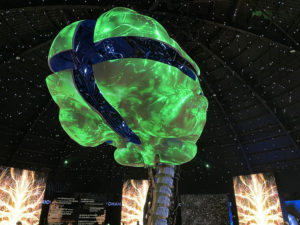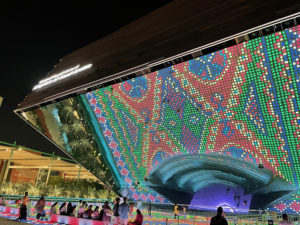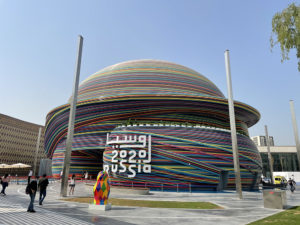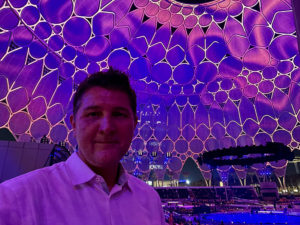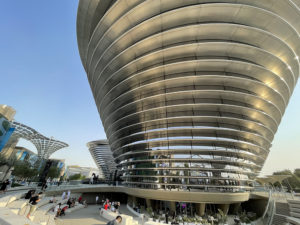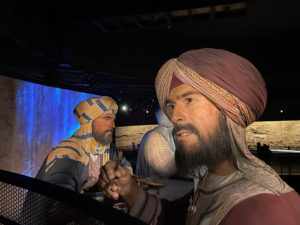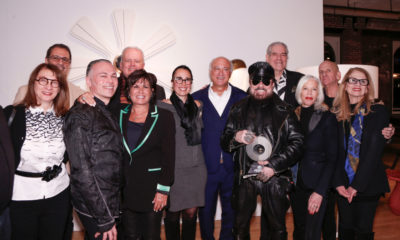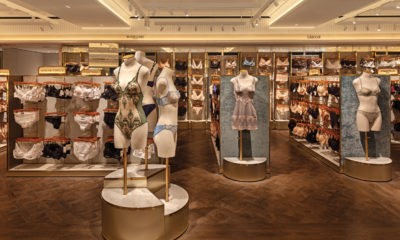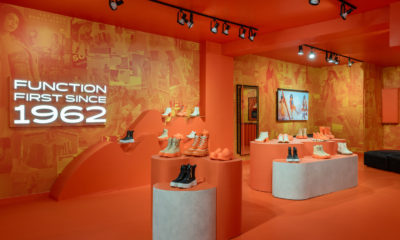IMAGINE THE OPPORTUNITY to visit a place where you could gain the equivalent of a Master’s degree in design experience, digital interactive, graphic design, architecture, trends, culture, food, sustainability, mobility and opportunity, all in five days. Would you go?
Well, I did, by attending Expo 2020 in Dubai, U.A.E., this past November (called 2020 though it was held in 2021, delayed one year due to Covid). I have to say this was one of the single most impactful weeks at a venue in my life’s career – and this coming from a guy who’s been to eight EuroShop trade show events.
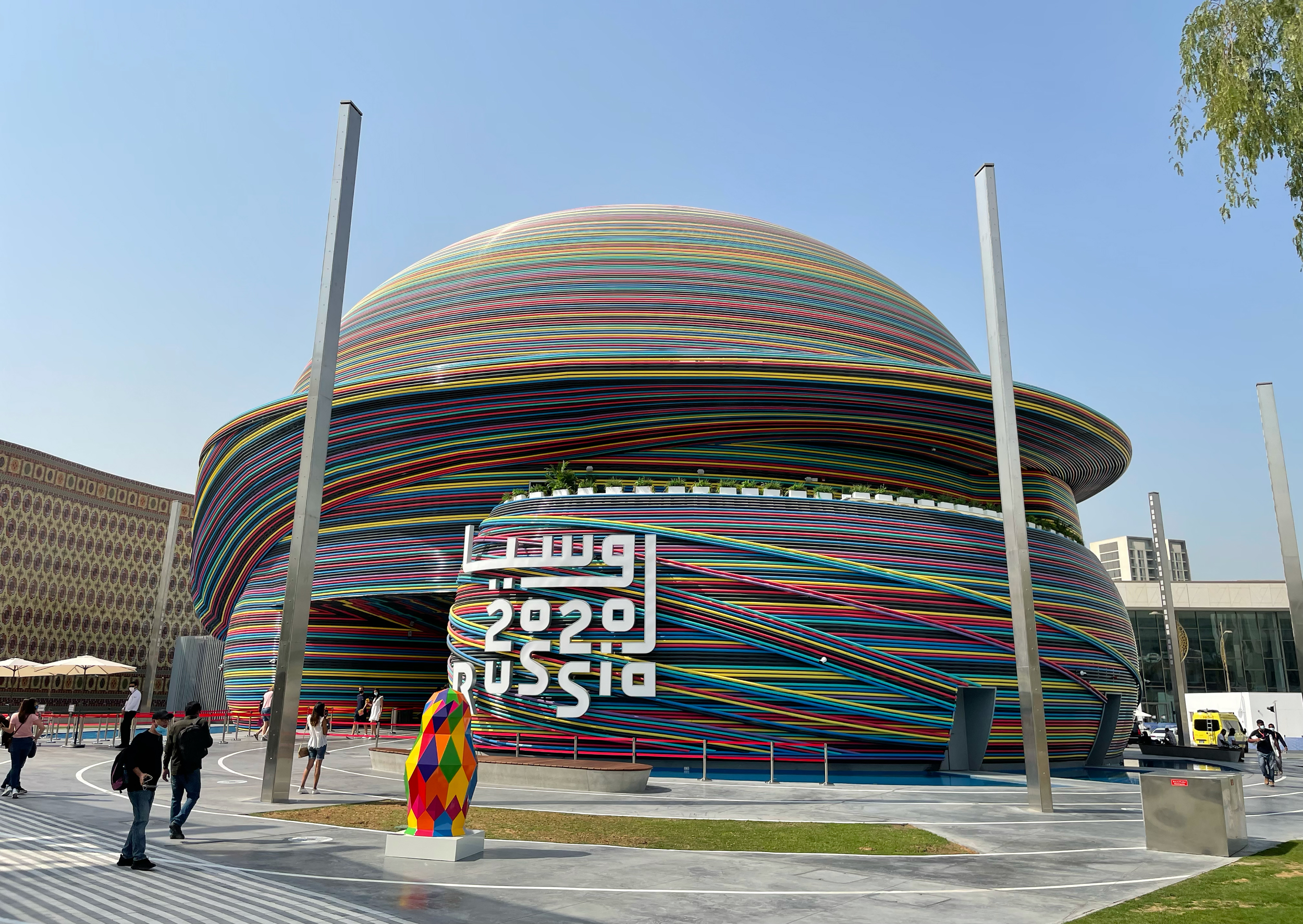
The Russia Pavilion is one of many attractions at Dubai’s Expo 2020, running until March 31.
📷: Brian Dyches, Los Angeles
The U.A.E. has taken the very meaning of “expo” to a whole new level. It’s the first Arab country to host the event – a global gathering of nations held every five years to explore innovative solutions to challenges of the times. It’s the third largest global event after the Olympics and The World Cup, and I believe it’s the most ambitious design experience ever held in Dubai, and that’s saying a lot. The architecture and digital experiences alone are worth jumping on an Emirates flight before the Expo officially ends March 31.
If you consider the logo the key to understanding Expo 2020, its design was based on a ring that symbolizes connectivity, resilience and heritage found in an archaeological site.
The essence of the logo translated beautifully into the overall venue layout which, from a bird’s-eye view, resembles three flower petals. Each petal represents a thematic district: Sustainability, Opportunity and Mobility. At the end of each zone is a special thematic pavilion.
Advertisement
The Sustainability Pavilion designed by Grimshaw Architects called Terra was built to be net-zero for both energy and water. The so-called “Energy Trees,” an array of solar panels creating a forest of structures, are paired with the “Water Tree” to capture water from the air and feed it into the pavilion’s systems. Another is Alif, the Mobility Pavilion, which showcases the world’s largest passenger elevator made for 160 people. The Opportunity Pavilion was designed by AGI Architects to bring a voice to earth’s inhabitants via speakers sharing stories of change to make our lives better, in part by referencing the urban history of the “plaza” as a place to connect people. Here the attendee discovers how they can unlock the potential of individuals and community by showing how each has a role to play in creating positive change.
At the heart of the expo is the amazing Al Wasl Plaza. (Al Wasl is the historic name of Dubai and means “connection” in Arabic.) Designed by Adrian Smith + Gordon Gill Architects, 252 laser projectors create a show that can be seen inside and outside of the dome, which features steel trellis framework and a woven series of rings inspired by the Expo’s logo. Overall, the site is huge and takes up 4.38 square kilometers (2.72 square miles).
With 192 participating nations plus the partner pavilions, organization pavilions and special pavilions, the event hall and its architecture and experience is second to none. Some of my favorite experiences include country pavilions from U.A.E., Saudi Arabia, Russia, Singapore, Australia and the U.S. that excelled in providing excellent customer journeys and interactive experiences. The special pavilions and the Women’s structures and interiors were also a 10. DEWA (Dubai Electricity and Water Authority) featured Virginia Tech’s award-winning solar-powered house, FutureHaus. Each main pavilion also featured gift shops and food selections typical of the country.
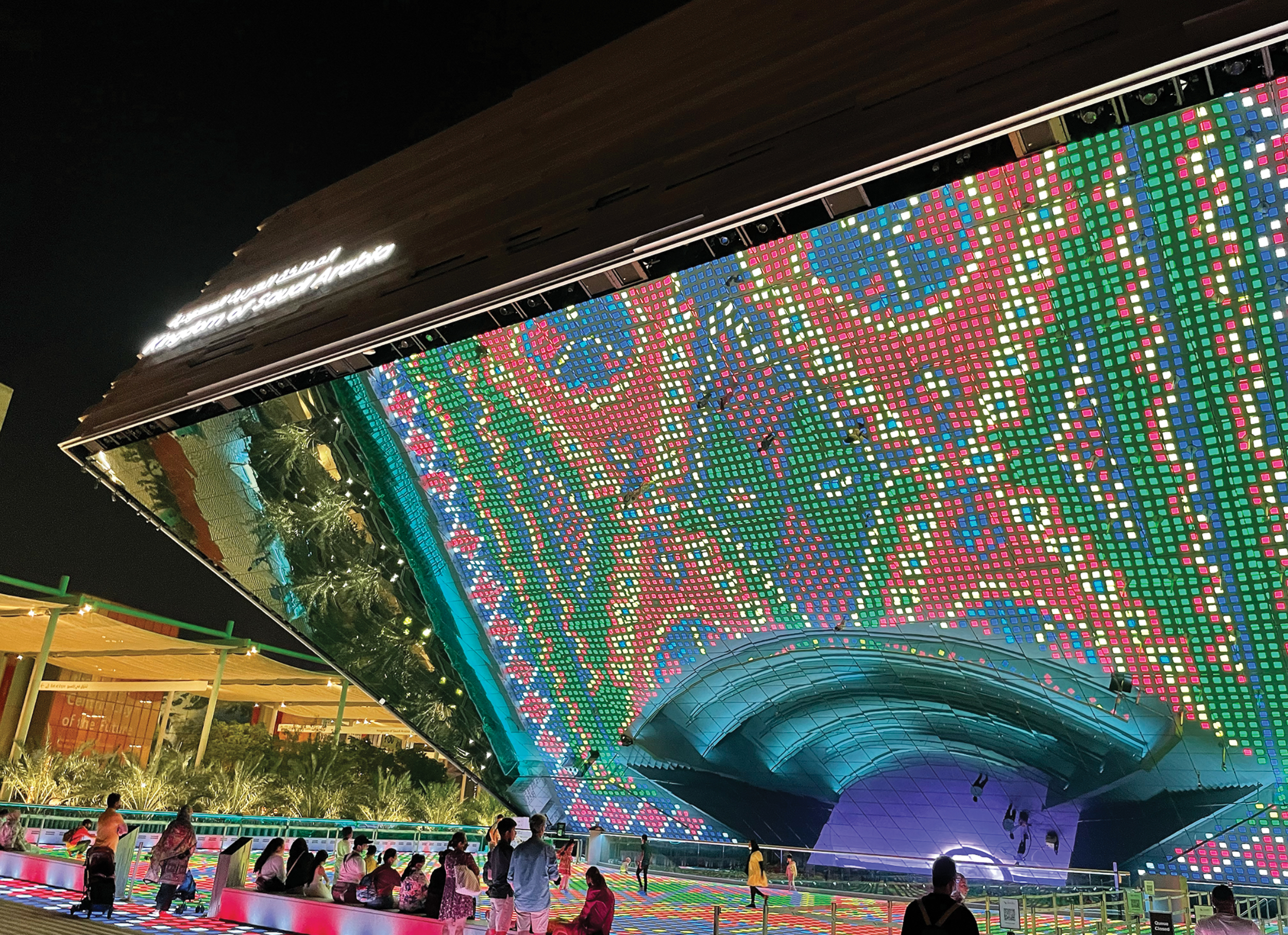
📷: Brian Dyches, Los Angeles
Alif, the Mobility Pavilion, was designed by Foster + Partners. Highlighted within this amazing structure included “Mission Control,” the world’s largest elevator, and a class A cinematic experience about breaking down the barriers between the physical and digital worlds to create a sound and comprehensive global society. New Zealand firm and five-time Academy Award recipient Weta Workshop created a next-level experience with 50-foot-high hyper-realistic figures of leading regional explorers. These life-like characters had detail like I’ve never seen – each face has approximately 20,000 holes filled with strands of hair to create the beards. The skin and hair, along with meticulous positioning and wardrobe, made you feel as if these figures were 100-percent real.
The U.A.E. Pavilion is not surprisingly the most extraordinary. Designed by Santiago Calatrava, the shape of the solar-powered structure is reminiscent of a falcon, the country’s national bird, and features a roof composed of 28 individual moving “wings” that mimic the bird in flight. As you meander through the exhibit to learn about the founder’s dream and vision of the U.A.E., digital stories unfold on the vast dunes made from real sand.
Advertisement
The Saudi Pavilion, the second largest at the expo, features the world’s largest LED mirror screen made of 8000 lights that create compelling patterns on the face of the cantilevered building. The building itself is LEED Platinum Certified and was designed by Boris Micka and Associates. A 30-meter diameter floating virtual sphere created by a collective of Saudi artists along with one the best retail stores at Expo round out the experience.
Many of VMSD’s readers live in the U.S., Canada and the U.K., so I shall end by saying that these three countries did an exceptional job with regard to design and experience. The U.K.’s Poem Pavilion uses artificial intelligence to take data from visitors and transform it into poetry that tells the story of the Expo, using their words as a way to keep the dream alive. Canada’s timber structure was simply stunning and one of the most beautiful, day or night. The U.S. Pavilion took visitors on a visual journey via a moving sidewalk, ending in a dome that tells the story of space and the future.
Expo 2020 will morph into a long-term site for Dubai, so look for more news from that region. The next Expo will be held in Osaka, Japan, in 2025. I highly recommend that retailers and designers alike consider this an important event in your best-practice calendar to attend.
PHOTO GALLERY (6 IMAGES)
📷: Brian Dyches, Los Angeles
Advertisement
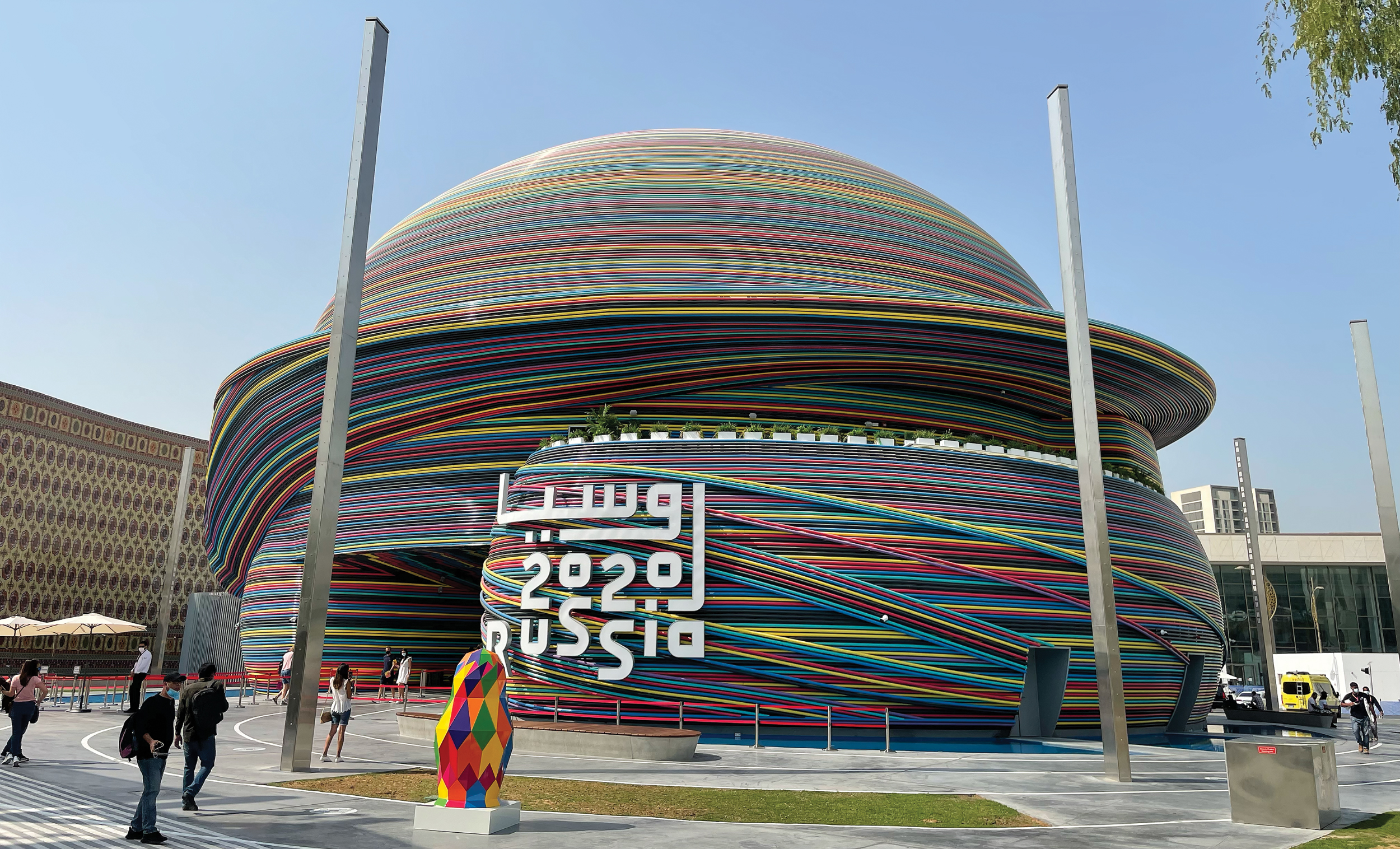

 Photo Gallery1 week ago
Photo Gallery1 week ago
 Headlines4 days ago
Headlines4 days ago
 Headlines1 week ago
Headlines1 week ago
 Headlines2 weeks ago
Headlines2 weeks ago
 Headlines1 week ago
Headlines1 week ago
 Designer Dozen1 week ago
Designer Dozen1 week ago
 Headlines1 week ago
Headlines1 week ago
 Headlines1 week ago
Headlines1 week ago


